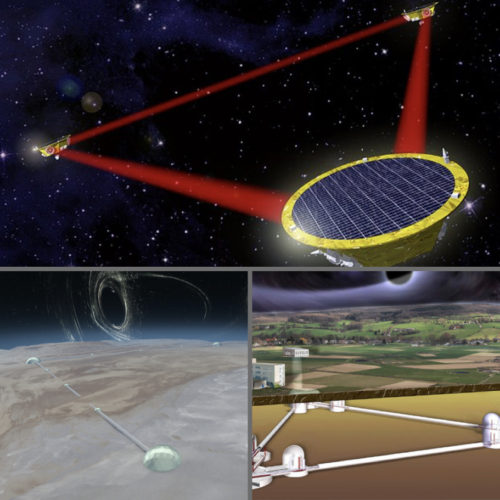Artist’s conception of the space-based LISA observatory (top), and ground-based Cosmic Explorer (bottom left) and Einstein Telescope (bottom right). Images: Astrium/cosmicexplorer.org/et-gw.eu
The next generation of gravitational-wave detectors are planned to begin operation in the 2030s. The space-based LISA observatory is scheduled to fly in 2034. It will be sensitive to gravitational-wave frequencies too low to be detected by ground-based detectors. This will make it possible to new systems, such as white-dwarf binaries and the progenitors of supermassive black holes. It will also be possible to observe binary black holes up to ten years before they merge, when they can be detected by ground-based detectors. Such signals would provide excellent tests of general relativity.
On the ground, the US-based Cosmic Explorer and European Einstein Telescope are proposed to begin observing in the mid-to-late 2030s. These detectors promise to be 10 times more sensitive than Advanced LIGO, allowing theme to detect virtually every binary black hole and binary neutron star merger in the observable universe. This will allow for precise tests of general relativity, measurements of the equation of state of dense nuclear matter, and new insights into the evolution of the universe.
With the large number of signals, and potential new noise sources, these new detectors also bring them a number of new data-analysis challenges. I am interested in applying the tools and skills we’ve obtained from detecting and analyzing LIGO signals to these next generation of detectors. Although these detectors are over a decade away, it is necessary to investigate their benefits and challenges now, in order to ensure that they are built to maximize scientific impact.
